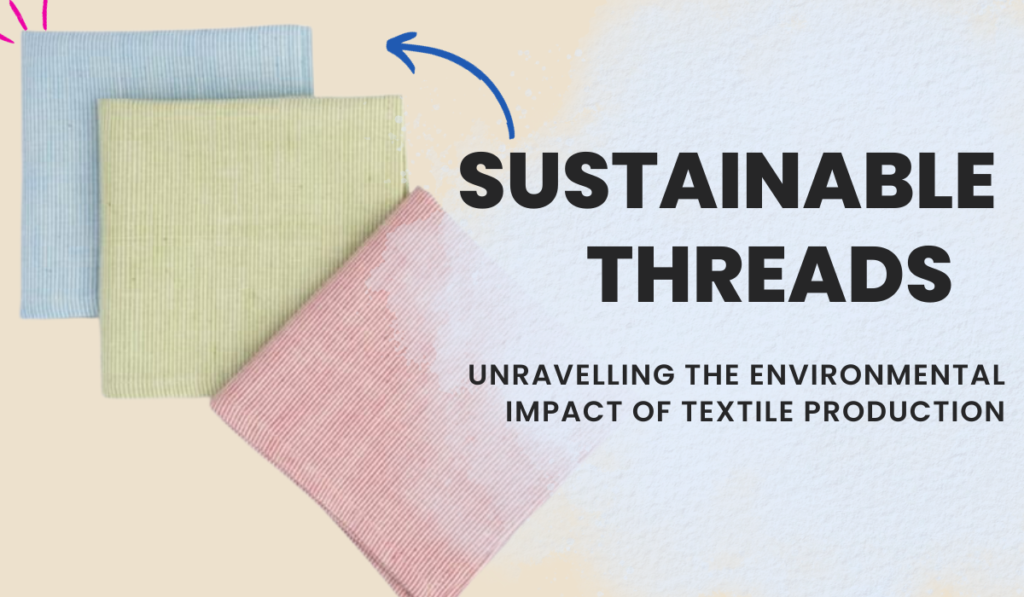
Sustainable Threads: Unravelling the Environmental Impact of Textile Production

Sustainable Threads: Unravelling the Environmental Impact of Textile Production
In the ever-evolving realm of fashion, where styles change in the blink of an eye, the ecological footprint of our clothing often goes unnoticed.
This article meticulously delves into the intricate environmental impact of textile production, exploring key facets ranging from raw material extraction to the global warming potential, with a focus on the vital role the textile industry plays in these dynamics.
Evaluating Environmental Impact across Stages:
1. Raw Material Extraction:
The Ammonia Shadow of Conventional Cotton The journey initiates with the extraction of raw materials, where conventional cotton cultivation leaves a considerable environmental footprint, marked by significant ammonia emissions and extensive energy use. Gomez-Campos et al’s insightful Life Cycle Assessment (LCA) on flax fibre draws attention to the often-overlooked spinning and weaving processes, revealing their contribution of over 60% to various impact categories.
2. Identifying Impact Categories:
Across Fibres nuanced analysis identifies five impact categories displaying significant variations across different fibres, underscoring the need for targeted strategies to address these variations.
3. Consumer Preferences and Organic Cotton:
Consumer behaviour becomes a pivotal aspect as Ellis, McCracken, and Skuza’s findings uncover a consumer willingness to pay a 25% premium for organic cotton t-shirts. This not only signals a market demand for sustainable choices but also reflects the economic implications of such preferences. Importantly, the study is centred on agriculture and textile production, honing in on the critical stages of a garment’s life cycle. Our Input: The Textile Industry’s Crucial Role
4. Life Cycle Inventory (LCI) and Assessment Methodology:
Delving into the textile industry’s role, we explore the concept of Life Cycle Inventory (LCI), a systematic approach quantifying environmental inputs and outputs throughout a product’s life cycle. The methodological framework underpinning Life Cycle Assessments (LCAs) is emphasized, highlighting the importance of standardized methodologies provided by the International Organization for Standardization (ISO).
5. Raw Material Selection:
A Green Battle of Choices. A comprehensive analysis unfolds as we pit organic cotton against conventional cotton and synthetic fibres. The focus is on the cultivation of organic cotton, exploring its benefits in reducing pesticide use, water consumption, and greenhouse gas emissions compared to conventional cotton and synthetic fibres. if you want more imformation please vist our site hulaglobal.com or click here


























